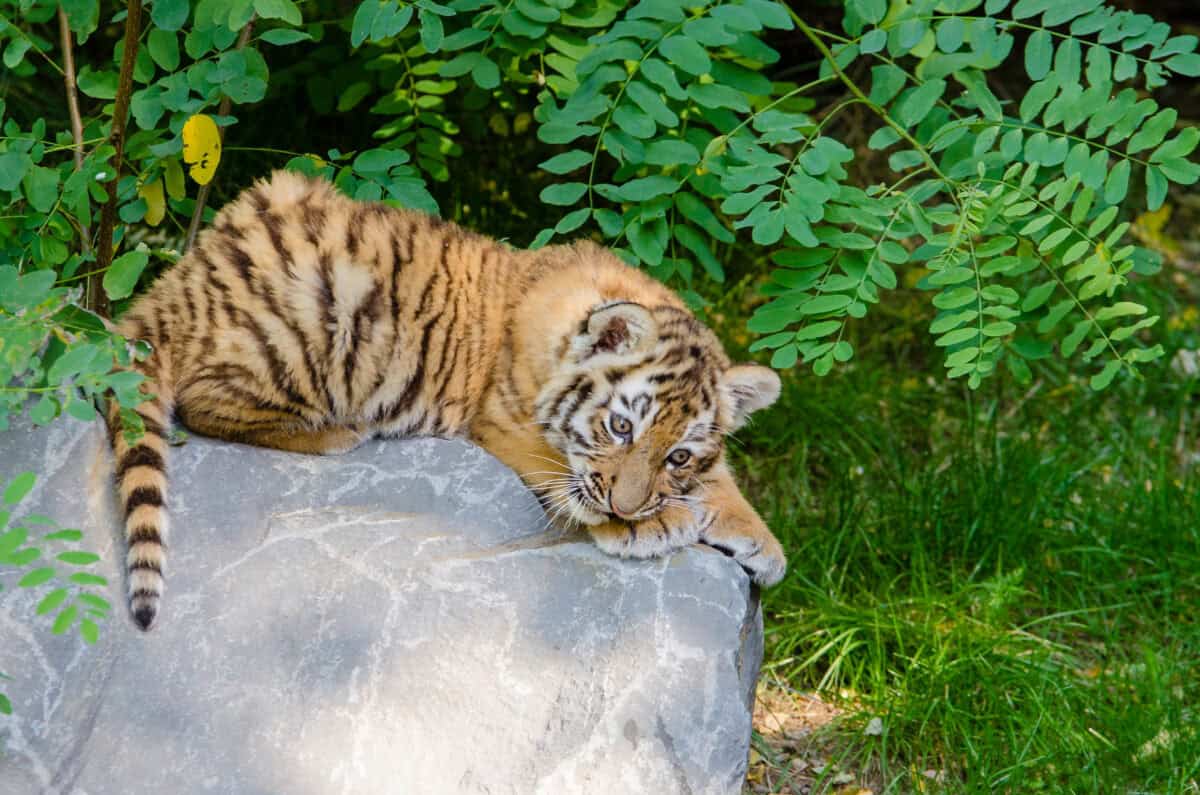Welcome to different kinds of wild cats around the world.
Are you a big cat lover? Then you’re in the right place to learn about different kinds of wild cats. There are around 40 species of wild cats found in the world, there are various regions where we can find wild cats. This article is the best way to learn about these cats.
Some use to live in snow areas, some live in dense forest. We can find a cat which is 2lb in weight (known as the smallest cat) to the largest cat member who is rusty in color with spots on their back. There are many small wild cats which makes these family a major one in size.
Click below to jump to any section on the different kinds of wild cats:
Caracal

These are wild cats which are found in Africa region and various other arid areas and regions like India, Central Asia. They are of medium body size compared to other big cats. They have long legs with short face and ears are tufted but long in length. And teeth are canine in look. Making them a contender on the list of different kinds of wild cats.
They have a fur on their back which is reddish tan color or sometime sand color. They have some time red color of marks on their body. They are around 40-50 cm in length from the shoulder and weight is around 8-18 kg. The caracal is physically dimorphic; the females are more modest than the guys in most substantial boundaries.
The unmistakable facial elements incorporate the 4.5-cm-long dark tufts on the ears, two dark stripes from the temple to the nose, the dark diagram of the mouth, the particular dark facial markings, and the white patches encompassing the eyes and the mouth. The eyes seem, by all accounts, to be barely open because of the brought down upper eyelid, most likely a transformation to protect the eyes from the sun’s brightness.
The ear tufts might begin hanging as the creature ages. The coat is consistently ruddy tan or sandy, like sand cats, however dark caracals are additionally known.
The underside and the inner parts of the legs are lighter, frequently with little ruddy markings. The fur, delicate, short, and thick, develops coarser in the late spring. The ground hairs (the basal layer of hair covering the coat) are denser in winter than in summer. The length of the gatekeeper hairs (the hair stretching out over the ground hairs) can really depend on 3 cm (1.2 in) long in winter, however abbreviate to 2 cm (0.8 in) in summer.
These highlights show the beginning of shedding in the hot season, regularly in October and November. The rear legs are longer than the forelegs, so the body seems, by all accounts, to be slanting lower from the backside.
Clouded Leopard
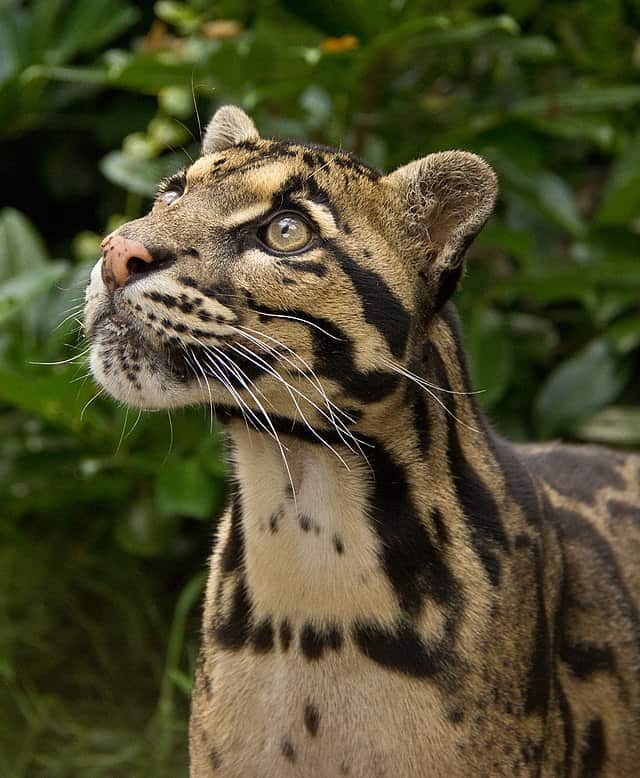
These panther are likewise known as the central area blurred panther, is a small sized wild cat possessing thick woodlands from the lower regions of the Himalayas through central area Southeast Asia into South China. In the mid nineteenth hundred years, a blurred panther was brought to London from China and portrayed in 1821.
It has enormous gloomy dark blotches and unpredictable spots and stripes suggestive of mists. It has a smaller face than other big cats. Its head-and-body length goes from 68.6 to 108 cm with a 61 to 91 cm long tail. It involves its tail for adjusting while moving in trees and can descend vertical tree trunks head first. It is a nocturnal animal – it rests in trees during the day and chases around evening time on the backwoods floor.
The spotted panther is the primary feline that hereditarily wandered 9.32 to 4.47 million quite a while back from the normal progenitor of the pantherine felines. Today, the blurred panther is locally wiped out in Singapore, Taiwan, and conceivably Hainan Island and Vietnam. Its complete populace is thought to be less than 10,000 mature people, with a diminishing populace pattern, and no single populace numbering in excess of 1,000 grown-ups.
It has consequently been recorded as Helpless on the IUCN Red Rundown beginning around 2008. The populace is undermined by huge scope deforestation and business poaching for the natural life exchange. Its body parts are presented for design and dress, however it is lawfully safeguarded in most reach nations. Making them a contender on the list of different kinds of wild cats.
Eurasian Lynx
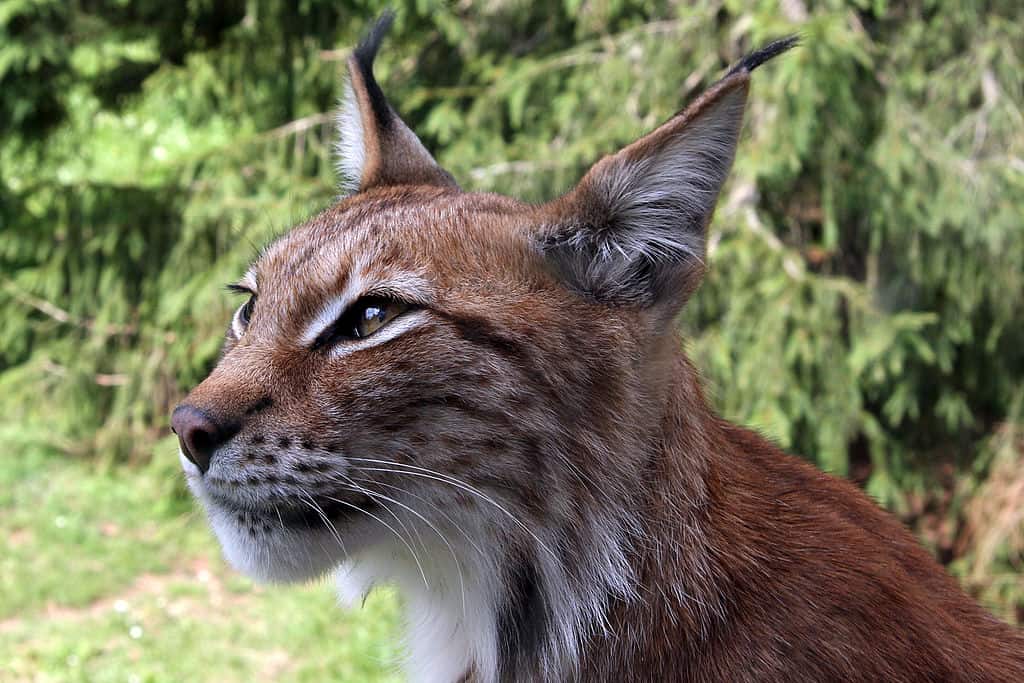
This animal found in north region of America, east part of Europe, mountain of Himalaya, Tibet region. They mainly found in woodlands but prefer to live in high areas with a height of around 1800 feet. They are medium size animals found in many parts of world. Making them a contender on the list of different kinds of wild cats. The common name is simply lynx.
Regardless of its wide appropriation, it is compromised by living space misfortune and fracture, poaching and consumption of prey. The Eurasian lynx has a somewhat short, rosy or earthy colored cover that is set apart with dark spots; their number and example are exceptionally factor.
The underparts, neck and jaw are whitish. The fur is all the more brilliantly hued with additional various spots in creatures living at the southern finish of its reach. In winter, it is a lot thicker and fluctuates from silver-dark to grayish brown.
This mysterious medium sized cat has dull earthy colored stripes on the temple and back. It has strong, generally lengthy legs, with huge webbed and furred paws that carry on like snowshoes, similar to the snow leopard. It likewise has a short “weaved” tail with an all-dark tip and a long dim and-white ruff. Their most unique feature is the dark tufts on their ears. The Eurasian lynx occupies rough nation giving a lot of safe-houses and following open doors.
Contingent upon the territory, this might incorporate rough steppe, blended backwoods steppe, boreal timberland, and montane woodland biological systems.
In the more rugged pieces of its reach, Eurasian lynx slips to the swamps in winter, following prey species and keeping away from profound snow. Notwithstanding its transformations for moving in snow, these medium sized wild cats find free, profound snow challenging to manage and can’t make due in regions with snow profundities surpassing 100 cm (39 in). It will in general be more uncommon where the dim wolf (Canis lupus) is plentiful, and wolves have been accounted for to assault and even eat lynx.
Different kinds of wild cats- The principle strategy for hunting is following, sneaking and bouncing on prey, in spite of the fact that they are likewise snare hunters when conditions are reasonable. In winter specific snow conditions make this harder and the creature might be compelled to change to bigger prey in Europe.
Eurasian lynx chase utilizing both vision and hearing, and frequently move onto high shakes or fallen trees to check the encompassing region. An extremely strong hunter, these lynxes have effectively killed grown-up deer gauging to something like 150 kg.
Cheetah
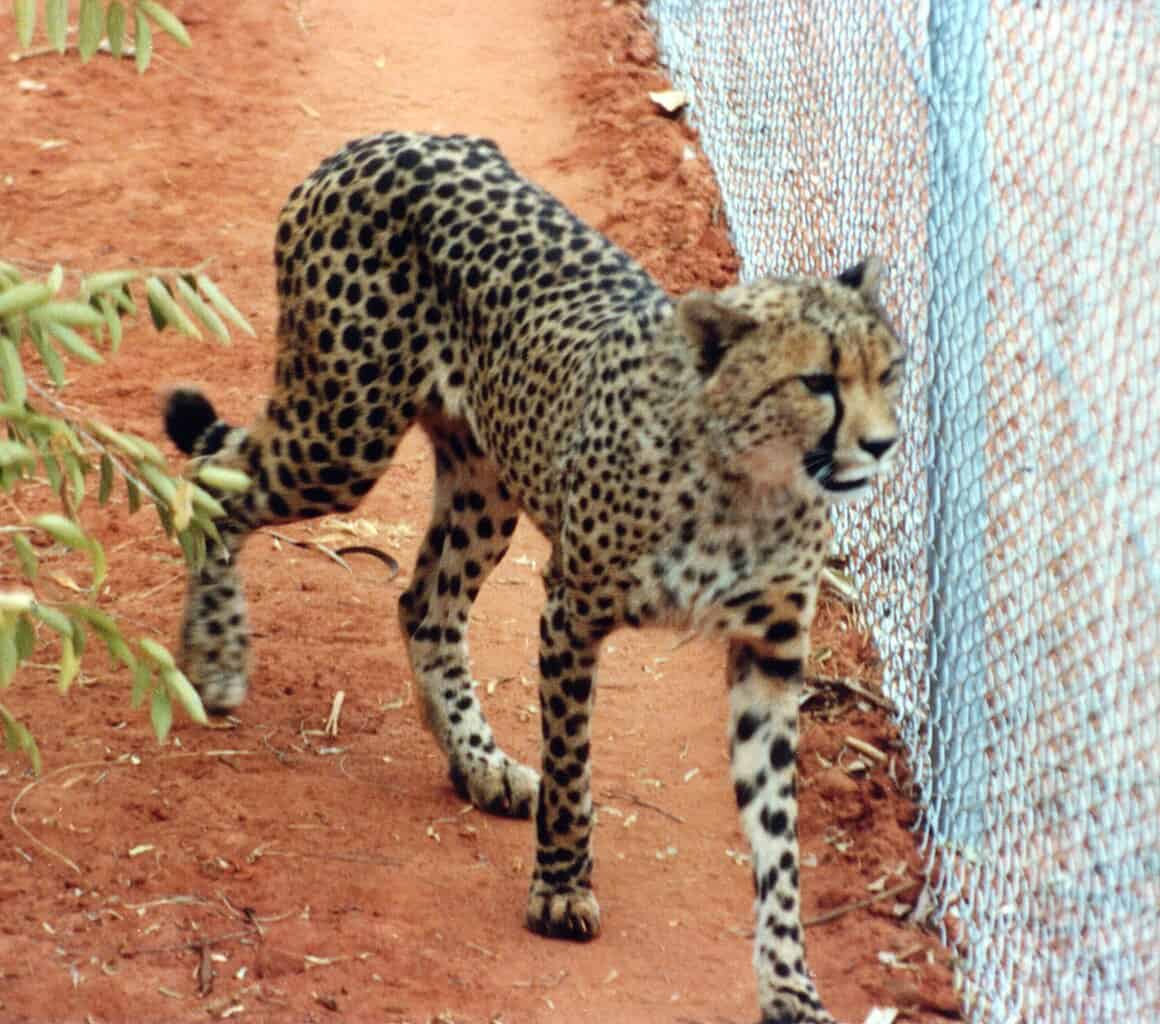
The cheetah, scientific name (Acinonyx jubatus), lives in three fundamental gatherings: females and their offspring, male “alliances”, and singular guys. While females have a roaming existence looking for prey in huge home reaches, guys are more stationary and may rather lay out a lot more modest domains in regions with copious prey and admittance to females.
The cheetah is dynamic chiefly during the day, with tops during day break and sunset. It benefits from little to medium-sized prey, for the most part weighing under 40 kg (88 lb), and inclines toward buck like impala, springbok and Thomson’s gazelles. Making these rusty spotted cats a contender on the list of different kinds of wild cats.
The cheetah ordinarily follows its prey to inside 60-70 m (200-230 ft), charges towards it, trips it during the pursuit and kills it with a swift bite of the prey’s throat.
Females breed consistently, not just during certain seasons. After an incubation of almost three months, a litter of normally three or four whelps is conceived. Cheetah whelps are profoundly powerless against predation by other enormous carnivores like hyenas and lions. They are weaned at about four months and are autonomous by something like 20 months old enough. Cheetahs are dynamic mostly during the day, while different carnivores, for example, panthers and lions are dynamic essentially at night.
These bigger carnivores can kill cheetahs and take their kills, subsequently; the diurnal propensity of cheetahs assists them with staying away from bigger hunters in regions where they are sympatric, like the Okavango Delta.
In regions where the cheetah is the significant hunter (like farmlands in Botswana and Namibia), action will in general increment around evening time. This may likewise occur in exceptionally parched districts, for example, the Sahara, where daytime temperatures can reach 43 °C (109 °F).
The lunar cycle can likewise impact the cheetah’s daily schedule — action could increment on twilight evenings as prey can be located effectively, however this accompanies the risk of experiencing bigger predators.
Hunting is the significant movement over the course of the day, with tops during first light and dusk. Gatherings rest in lush clearings after nightfall. Cheetahs frequently investigate their area at perception focuses, for example, rises to check for prey or bigger carnivores; even while resting, they alternate at watching out.
Snow Leopard

These animals have advanced to spend most brutal circumstances on the planet. They have white or grey color coat on their back which is very thick. They coat is spotted with black color blends. Their look and incredible nature some of them also called them as “Mountain Ghost”. Making them a contender on the list of different kinds of wild cats.
Its a moderately large cat with rear legs are so powerful which help them in jump and provides a leap which is more time good as that of their body. They have long tail which provides them a grip and ability to retain in snow season and live in Snow Mountains and rocks.
Snow leopards are known as the kind of Snow Mountains and have an extremely hidden living style. They are found in various regions as per the report they are found in 12 different countries like Nepal, India, Pakistan, and Russia etc. They cover a very major area like around 7000 miles which is almost 60% of habitat which is majorly in china region. As per the reports 70 % of the region is not known.
They are also found in Nepal and Mongolia region around 15.4 square miles of regions found in Nepal region and around 193 is found in Mongolia region. Their population also varies based on the prey and surrounding, environment, habitat. In any case, the snow panther populace is reasonable declining. The snow panther’s fur is whitish to dark with dark spots on head and neck, with bigger rosettes on the back, flanks and shaggy tail.
This cool cat has a whitish tummy. Its eyes are light green or dark in variety. Its gag is short and its temple domed. Its nasal cavities are huge. The fur is thick with hairs somewhere in the range of 5 and 12 cm (2.0 and 4.7 in) long. Its body is stocky, short-legged, and marginally more modest than different felines of the sort Panthera, arriving at a shoulder level of 56 cm and running in head to body size from 75 to 150 cm.
Its tail is 80 to 105 cm long. It weighs somewhere in the range of 22 and 55 kg with an infrequent enormous male arriving at 75 kg and little female of under 25 kg. Its canine teeth are 28.6 mm long and are slimmer than those of the other Panthera species.
Corresponding to the length of its skull and width of its sense of taste, it has huge nasal openings, which take into account expanding the volume of air breathed in with every breath, and simultaneously for warming and humidifying cold dry air. It isn’t particularly adjusted to high-height hypoxia
Cougar
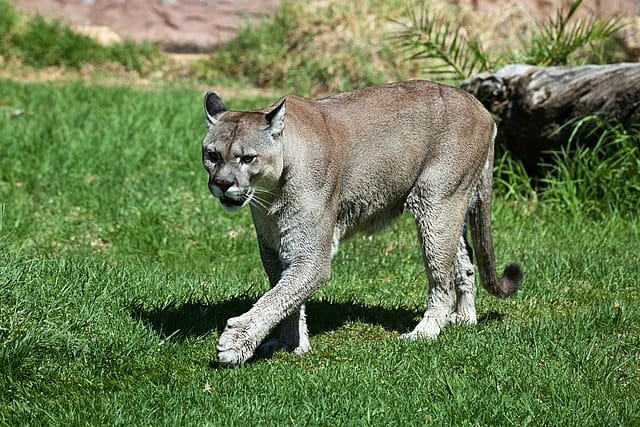
These animals are also known as puma which is majorly found in north region of America. In contrast to other huge felines, in any case, the cougar does not have a loud roar. They look very much similar to the domestic cat and different wild cat species, they have sharp head and ears are pointed in look. Making them a contender on the list of different kinds of wild cats.
They are around 5-9 feet in length from head to tail. Male cougar is around 68 kg in weight and female cougar is around 45 kg in weight. The upper part of the body has fur which is grey color so sometime it may be reddish color. Some parts under the body are light in color.
They prefer to live in various different kinds of habitats like mountains or sometime desert, sometime sea level. They are very flexible where ever they found food they create their home. For the most part they go after deer yet additionally feed on more modest creatures if fundamental, including homegrown creatures and animals.
They also like to eats insects. Gifted and clever trackers, cougars stay stowed away from their food till they jump with hooks out-extended. Cougars can likewise move effortlessly and jump north of 20 feet. Subsequent to killing an enormous creature, a cougar conceals the corpse and eats before long.
Generally, the cougar has no normal foes and sits on the pecking order. Notwithstanding, they every so often contend with different hunters like bears and wolves for food. During the greater part of their lives, cougars are lone animals.
They communicate just to mate, which can occur whenever of year. Females can rise as soon as 2-3 years of age and bring forth 2-3 small wild cats all at once. They raise the youthful while the guys return to their singular ways of life. At around two years of age, cougar posterity will pass on their mom to begin their own life. A solid cougar in the wild can live to close to 10 years old. In imprisonment, cougars can live up to 20 years.
Mountain Lion
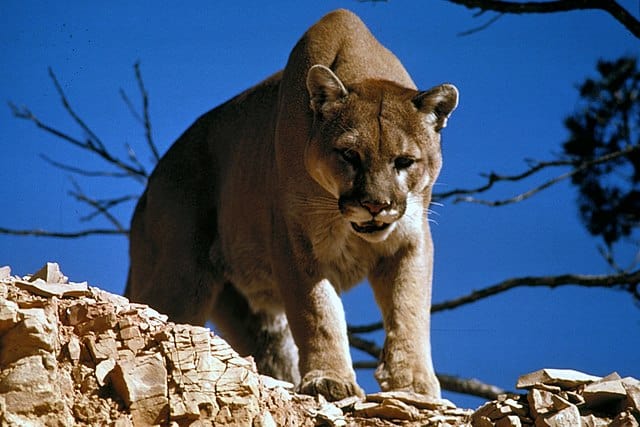
This solitary cat can be found in various regions of America like north, south of America. They are tan in color. They are also found in west region of America as well as in Florida. There are also known by many other names like puma, catamount, panther, mountain lions which are found in various other habitats too. They are found in mountain areas like Blue Mountain in the north east part of Oregon region and Cascade mountain areas which are found in south west part.
Talking about their look it seems like they are big in size and have shot hairs seems like a house fluffy cat. Their head is small in size and face is also shot, having small ears which are round in shape. They have long neck with long tail and body is long and sleek in appearance. They have good strength in their legs which provides them a good speed for running over their prey. They have a very sharp tooth which helps in teasing their food and chewing the meat.
On an average this animals is around 3’3″ to 5’5″ long in length. But when we consider tail in their length then some male length will be around 9 feet and female length will be around 7 feet. From shoulder to the ground they are around 2 feet to 2.6 feet in length when they stand.
When they are adult, females are around 80 – 100 pounds in weights on the other side male is around 125 -160 pound in weight. Color variety goes from a brownish variety to a pale blue dark. Nose and tails is black in color from the edges, while belly, inner parts of legs, throat is light in color. The young babies born with some spots on their body and these spots get faded in around 6 month of time span.
Summary on different kinds of wild cats
In the wild cat genus felis there are many different kinds of wild cats- as per the research work there is around seven kind of wild cats found in various region like leopard, snow leopard, sunda, tiger, jaguar, cheetah, and there are even small wild cats. The smallest wild cat is the black footed cat in South Africa, which is a particularly adorable feline. This small African wild cat is endangered on the IUCN redlist. In fact, many among these wild cat species are on threatened mark because of change in environment, loss of habitat and parts of its range in their respective regions and locations.
If you enjoyed reading about the different kinds of wild cats in the cat family, you may like to learn about where to encounter big wild cats, a complete guide on seeing cheetahs in the wild and where to see the lynx. We even have a special article comparing the Sumatran Tiger to a Snow Leopard, and have a look at the endangered small wild cat. Enjoy!
Join our Forum for free today!

- These are The 5 Largest Great White Sharks Ever Recorded - July 19, 2024
- The Surprising Benefits of Big Game Hunting - July 18, 2024
- $100k+ Hunting Experiences The Most Expensive Animals to Pursue - July 17, 2024

